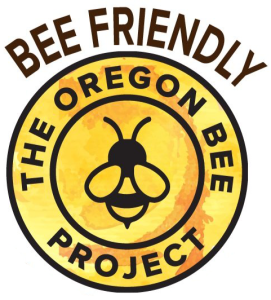Oregon Bee Project
Discover the Buzz: Oregon’s Mission to Protect Pollinators
Since 2017, a passionate alliance of scientists, farmers, foresters, educators, and community members has been working hand-in-hand to protect Oregon’s buzzing pollinators. What began as a united effort between state agencies and local partners has grown into a vibrant movement committed to ensuring the future of bees across our state.
The heart of this initiative is simple: empower Oregonians with knowledge, inspire pollinator-friendly practices, and support vital research that helps both wild and managed bees thrive. If you love bees and want to be part of something bigger, you’re invited to join the effort—because every backyard, farm, and flower counts.
Bee Fun Facts
Do bees like humans?
Surprisingly, yes!
Bees can detect human faces
They can recognize and build trust with human caretakers
📖 Related article: “7 Unbeelievable Facts About Bees & Love” – OneABlog
Are bees attracted to UV light?
Yes. Bees are sensitive to ultraviolet (UV) wavelengths and are particularly drawn to blue fluorescent lights.
How do bees see the world?
Bees see in the UV spectrum, which allows them to detect flower patterns invisible to the human eye. These patterns guide them to nectar and pollen.
How do bees detect pollen?
Bees carry a positive electrical charge, while flowers have a negative charge. Their antennae and body hairs can sense these fields, helping them identify and locate pollen.
How do bees carry pollen?
Bees use specialized pollen baskets (called corbiculae) on their hind legs. As they move from flower to flower, pollen sticks to their fuzzy bodies and is collected into these baskets for transport.
What colors are bees most attracted to?
Bees are especially drawn to blue, purple, violet, white, and yellow flowers.
📖 Related article: “The Secret Reason Bees Love Blue & Purple Flowers” – Save the Bees
Should I plant flowers in groups or individually?
Planting flowers in clumps of at least 4 feet in diameter is more effective for attracting pollinators.
Why is it important to have different flower shapes?
With over 4,000 bee species in North America, having a variety of flower shapes supports different bees with varying body sizes, tongue lengths, and preferences.
📖 Related article: “How to Attract Bees & Other Pollinators to Your Garden” – The Spruce
When should I plant flowers to attract bees?
To support pollinators throughout the year, plant flowers that bloom across all seasons.
Where should I plant flowers to attract bees?
Bees prefer:
Sunny areas over shaded ones
Locations protected from strong winds
Help Keep Oregon Buzzing – Support the Bees!
Bees are more than just pollinators—they’re vital to our food supply, environment, and future. The Oregon Bee Project brings together researchers, farmers, and everyday Oregonians to protect wild and managed bees through science, education, and sustainable practices.
🌻 You can make a difference today.
Your donation helps fund bee-friendly habitat restoration, cutting-edge research, and statewide education that inspires action at every level—from classrooms to farms to neighborhoods.
💛 Whether it’s $5 or $50, every contribution counts toward keeping Oregon blooming and buzzing.
👉 Click here to donate now via PayPal
Thank you for helping us protect the pollinators that keep Oregon growing!

